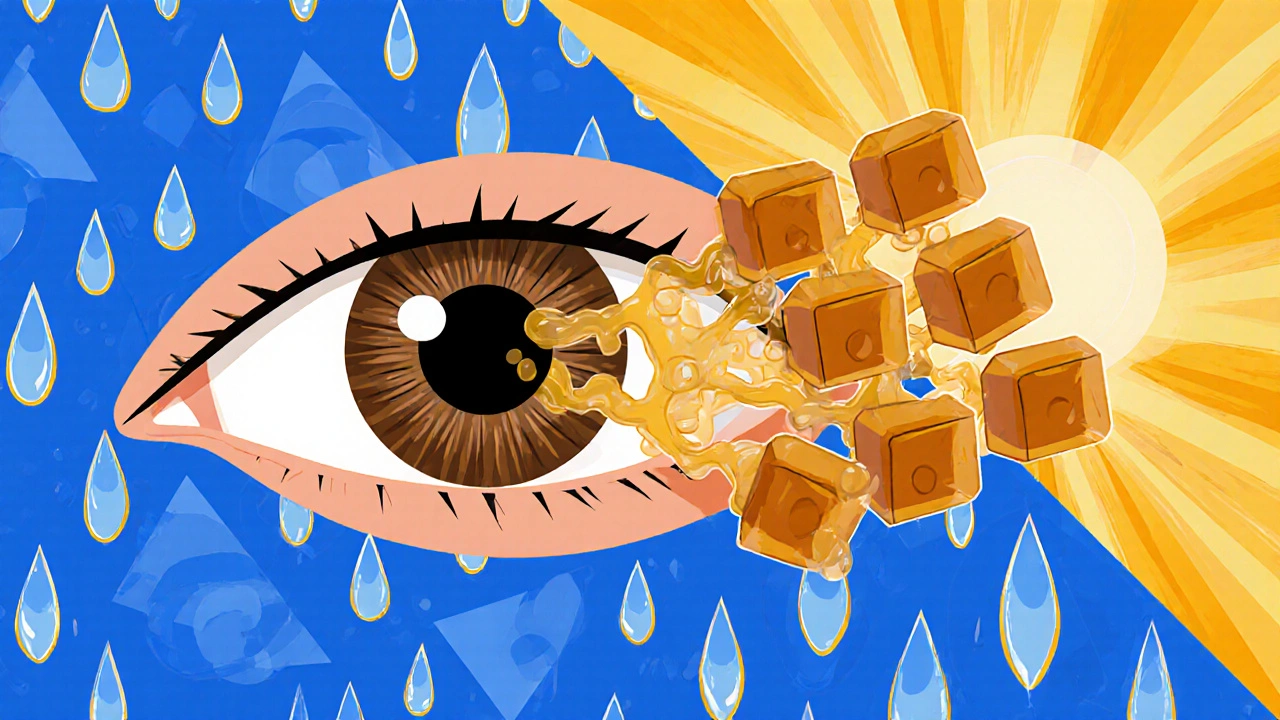SEARCH
MGD Treatment: What Works, What Doesn't, and How to Find Relief
When your eyes feel dry, burning, or like they’re full of sand, it’s often not just about lack of tears—it’s about meibomian gland dysfunction, a condition where the oil-producing glands in your eyelids get clogged, leading to rapid tear evaporation and chronic dryness. Also known as MGD, it’s the leading cause of dry eye syndrome, yet most people don’t know it’s treatable—and often reversible. Unlike simple dry eye from screen use or aging, MGD comes from blocked glands that stop secreting the oily layer your tears need to stay stable. Without that oil, your tears evaporate in seconds, leaving your eyes raw and tired—even if you’re using artificial tears daily.
That’s why warm compresses, a simple, low-cost method that melts hardened oil in the glands are the first-line fix for most people. Just applying heat for 5–10 minutes twice a day can make a noticeable difference. But heat alone isn’t enough. You also need eyelid hygiene, the practice of gently cleaning the eyelid margins to remove debris and bacteria that worsen blockages. Many skip this step, thinking wipes or baby shampoo are enough—but proper lid scrubs with FDA-cleared products or diluted tea tree oil (under guidance) are what actually clear the glands over time.
Some people try over-the-counter drops and think they’re fixing the problem. They’re not. Those drops replace water, but they don’t fix the broken oil layer. Real MGD treatment targets the root: unclogging the glands. That’s where things like lipiFlow, a professional in-office procedure that uses controlled heat and pressure to clear blocked meibomian glands come in. It’s not for everyone, but for those with severe MGD, it’s often life-changing. Other options include prescription eye drops like cyclosporine or lifitegrast, which reduce inflammation that contributes to gland damage.
What doesn’t work? Rubbing your eyes. Using expired drops. Waiting for it to go away on its own. And assuming your dry eyes are just "normal" because you’re over 40. MGD doesn’t just happen with age—it’s fueled by screen time, makeup, poor diet, and lack of eyelid care. The good news? Most people see improvement within weeks if they stick with the basics: heat, clean lids, and avoid irritants.
You’ll find real stories below—from people who stopped relying on drops after learning how to clean their glands properly, to those who tried every treatment before finding one that finally worked. No fluff. No marketing. Just what helps—and what doesn’t—when your eyes are screaming for relief.

Ocular Surface Disease: Effective Care for Meibomian Gland Dysfunction
Meibomian gland dysfunction (MGD) is the leading cause of dry eye disease. Learn how daily home care, in-office treatments like LipiFlow and IPL, and medications like azithromycin can effectively manage symptoms and prevent long-term damage.
Continue reading